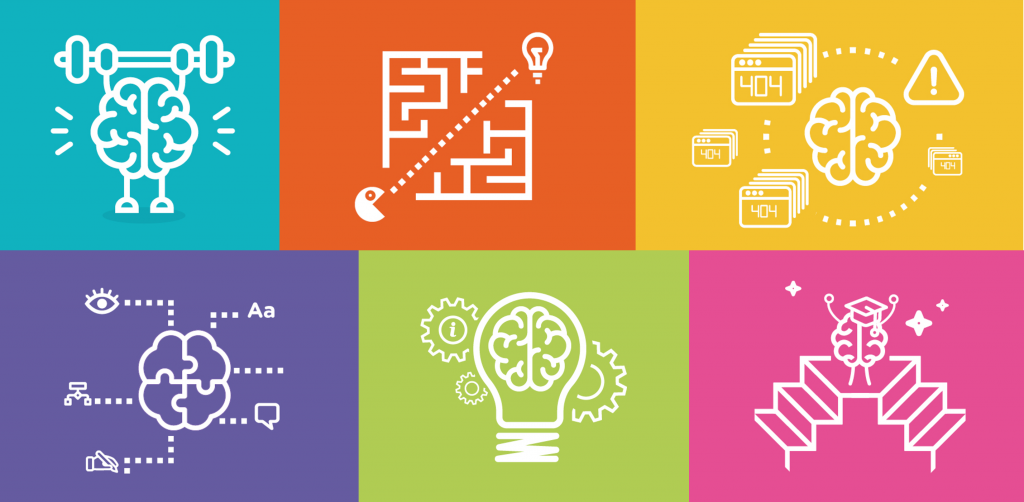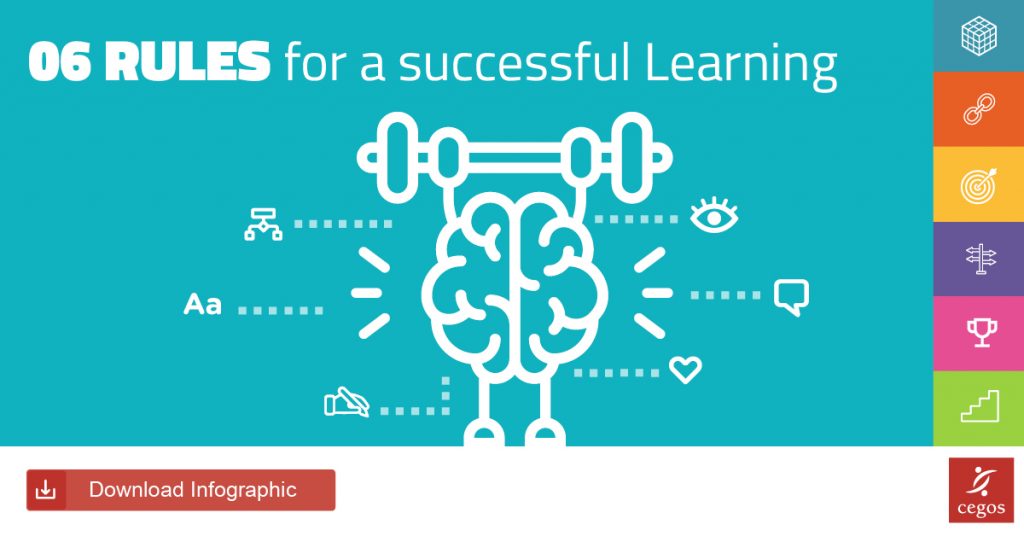The effective transfer of learning occurs through a variety of factors, but it starts, from the outset, in the way we design and monitor the learning paths: what tools and resources are used? What synchronous and asynchronous moments are included? Will trainees learn beyond theory and knowledge exposure? Will they have access to lectures, interactive e-learning modules, virtual classes, case studies, videos and other multimedia materials? Will they experiment and practice through case simulation, problem solving and implementation in a real work context? Will they be followed through their progress and share their experiences with other participants, line managers, colleagues or peers?

We believe that efficiently developing skills and truly accelerating performance occurs through learning that goes far beyond the mere acquisition of knowledge. To make it happen, we identified 6 steps for a successful learning:
1 – In addition to theory, practise and receive feedback
Knowing the theory is not enough to master an area… and mistakes are part of the learning process. They tell us that we are stepping out of our comfort zone. They help us learn! Therefore, thorough feedback (tests, problem-solving, on-job exercises …) helps trainees correct their mistakes and improve their skills, practices and behaviours.
2 – Combine different ways of representing key concepts
Learn to clarify and manage the amount of information you want to deliver, combining different resources: text, images, sound, video, animations, etc. Select the information to be highlighted and provide simple materials with properly structured and organised information.
3 – Build mental shortcuts that help memorize
Draw a storyline to link various concepts or tools and use mnemonic techniques (metaphors, acronyms, emotions…). It will help linking contents and facilitate access to what you have learned.
4 – Bring the right information at the right time
Avoid moments of mental overload that can impede or block the learning process. Limit the information to be absorbed. Vary angles and delivery methods to consolidate essential content. Also divide the content into sub-contents, divided into sequences, and adapt each one of them to the level and profile of the trainees.
5 – Stimulate trainees’ focus and attention
Remember that the brain is less efficient when doing multiple things at the same time. Often one minute focused is better than five minutes of fuzzy thinking! Give clear, organized instructions, concentrate on the essentials, and build content gradually. It will help keeping participants not only focused but aligned and motivated with your learning journey and goals.
6 – Set the right level of difficulty
Encourage participants to build on their existing proficiency level, taking one small step at a time. Alternate the concepts to be learned, provide different types of support (tutoring, mentoring, coaching …). Trainees will then have the opportunity to make their own connections between concepts, experiment and put into practice. Being active agents of their own learning process in a progressive and consistent process.
Are learning paths available in your training plan capitalising on all these steps? Please share your experience in the comments.
Did you like this content?
Download the infographic and always have it at hand.
This post was written by Cátia Silva, Head of Open Courses Business at Cegoc. It was published on the for the Portuguese Blog on Management and Leadership, using an infographic created by Cegos Channels & Alliances’ team.



Leave a comment